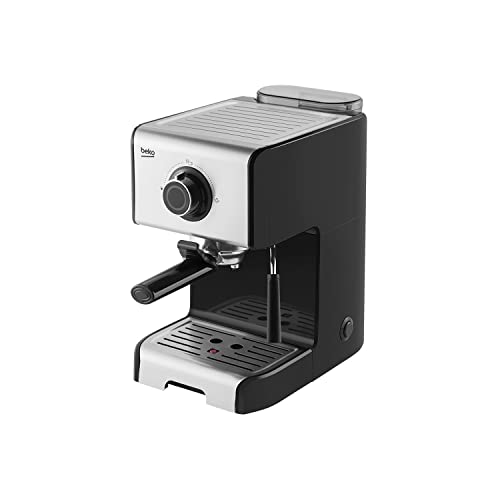How to Build a Professional Espresso Machine
For coffee shops and cafes seeking to attract customers with passion for espresso and barista skills this is an excellent choice. It's an official machine for the World Barista Championships, and it displays.
It is equipped with a reservoir of water so that the barista just requires refilling it throughout their shift. The machine comes with hot water for tea and steam wands with cool-touch.
Water
A commercial espresso machine is required to produce a large quantity of espresso based drinks efficiently. They are typically made of stainless steel, which is durable and resistant against breaks and scratches. Espresso machines made of stainless steel make it easier to keep clean and maintained.
A high-quality machine should have an independent shut-off valve for the water pipe in order to prevent limescale build-up. This will ensure that any repairs are made to the affected components of the machine and won't impact the rest of your operation.

Test your water and make sure it's being treated correctly. For instance, distilled water can be remineralized by adding a small amount of minerals back into it. It can enhance the taste and negate its erosive qualities, but could also cause damage to certain machines. The remineralized wate can make the boiler sensor think the machine is full and it isn't. espresso machines uk can cause overheating and possibly damaging the machine.
Grinder
The grinder is an essential component of a successful espresso maker. It is used to take a raw, unground bean and transforms it into a finely ground coffee that can be tamped into the filter basket, resulting in an excellent extraction.
Professional-grade commercial machines include a grinder that can be programmed for various sizes of drinks. This ensures constant results every time. Super-automatic machines go one step further and automate the entire process from brewing through grinding and dispensing. These machines are often praised by Lab tests for their ease to use.
A semi-automatic or manual espresso machine requires more involvement from the barista, but the quality of the end result is often worth it. This model earned an 2022 Good Housekeeping Coffee Award for its dosing technology which weighs and delivers the right amount of ground coffee each time. It also comes with a low-pressure pre-infusion system that allows for an even extraction, as well as a milk frothing wand that excelled in our test for producing rich, thick steamed milk.
Temperature
Temperature is a major factor in espresso. If the temperature of your water is not at its ideal level, it can result in a slower extraction and can even lead to bitter coffee.
Fortunately, espresso machines of high-end quality have tools that allow you to ensure that your water is at the correct temperature. One method to achieve this is by utilizing a PID, which monitors and adjusts the temperature of the water. Another option is making use of a double boiler. You can use one boiler to heat steam and water for tea, and use the second boiler to heat the water to brewing temperature.
Carles explains that these systems can be beneficial for large corporations as well as home-based baristas. They make it easier for beginners to determine the ideal shot of espresso because they can maintain an exact temperature and eliminate many of the factors that can alter the flavor profile. It also makes it easier for experienced baristas to make their espressos exactly how they want them.
Pressure
The pressure an espresso maker employs is another factor that contributes to the quality of the coffee it produces. Many espresso drinkers have noticed that their drinks taste different based on the pressure that is used, even though all other elements remain the same.
Most commercial machines use 9 bars of pressure to make espresso. These machines are also more likely to be steam-driven than pumps-driven. While there are higher-pressure machines they generally require a more intricate group head design to manage the higher pressure levels.
While some espresso machines advertise 15 or 18 bars of pressure in their machines Nine bars are generally considered to be the gold standard for making consistently great espressos. The higher-pressure machines tend to be less expensive and designed for use at home.
In comparison, 9 bar of pressure is four times higher than the pressure exerted by your car tire. The more pressure that a professional espresso maker can apply, then the more effective it is in bringing out the flavor of the coffee beans you love. It is worth investing in top-quality machines that will give you the highest quality results.
Barista Skills
A barista should be able to accept and process customer orders quickly and accurately. This is especially crucial during busy times at the coffee shop. Excellent customer service skills are crucial to build relationships with customers and increasing sales for the coffee shop. This includes recognizing regular customers, resolving issues efficiently and remaining optimistic and welcoming even in stressful situations.
Baristas often need to be capable of multitasking, as they are required to take orders, operate a cash register and share orders with colleagues and respond to phone calls all at once. This skill allows them to keep orders moving quickly to the customer and ensures that customers have an enjoyable time in the coffee shop.
It is essential for a barista to know the various types of drinks that can be prepared by an espresso machine. This can be mastered by reading about the various kinds of coffees, trying them out in person, or watching videos online. Many baristas find it beneficial to take classes offered by various organizations.
